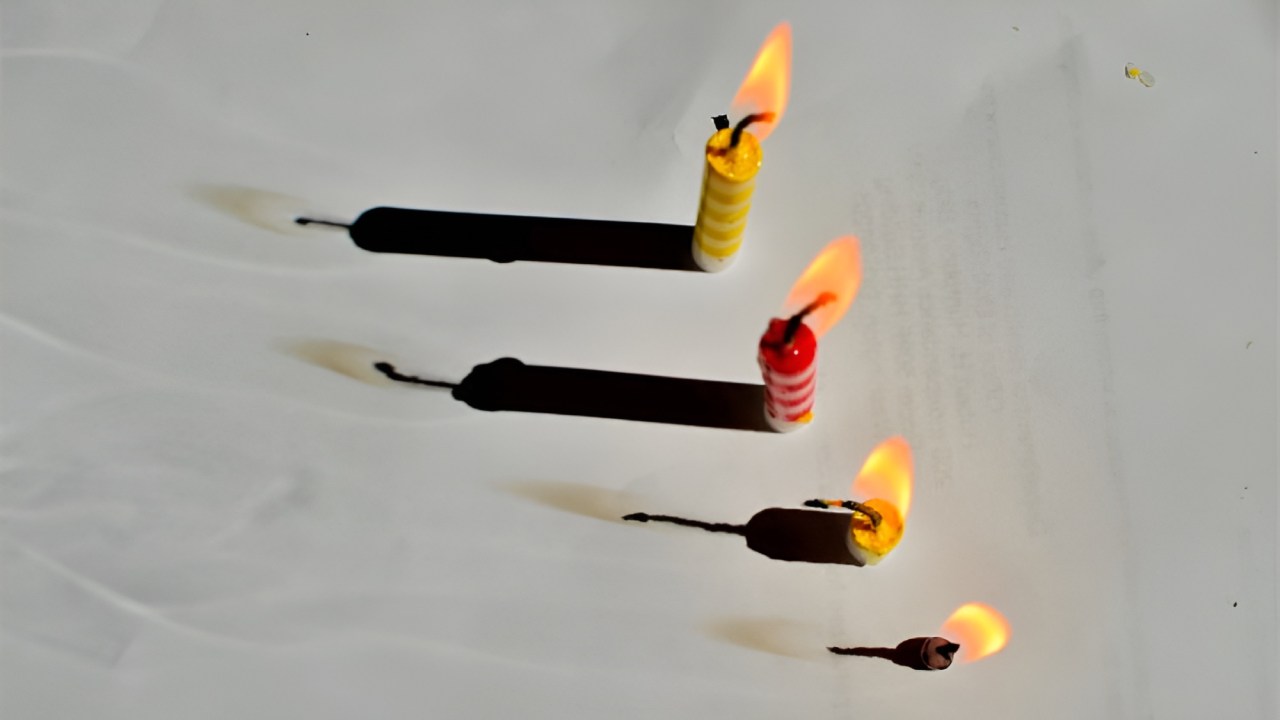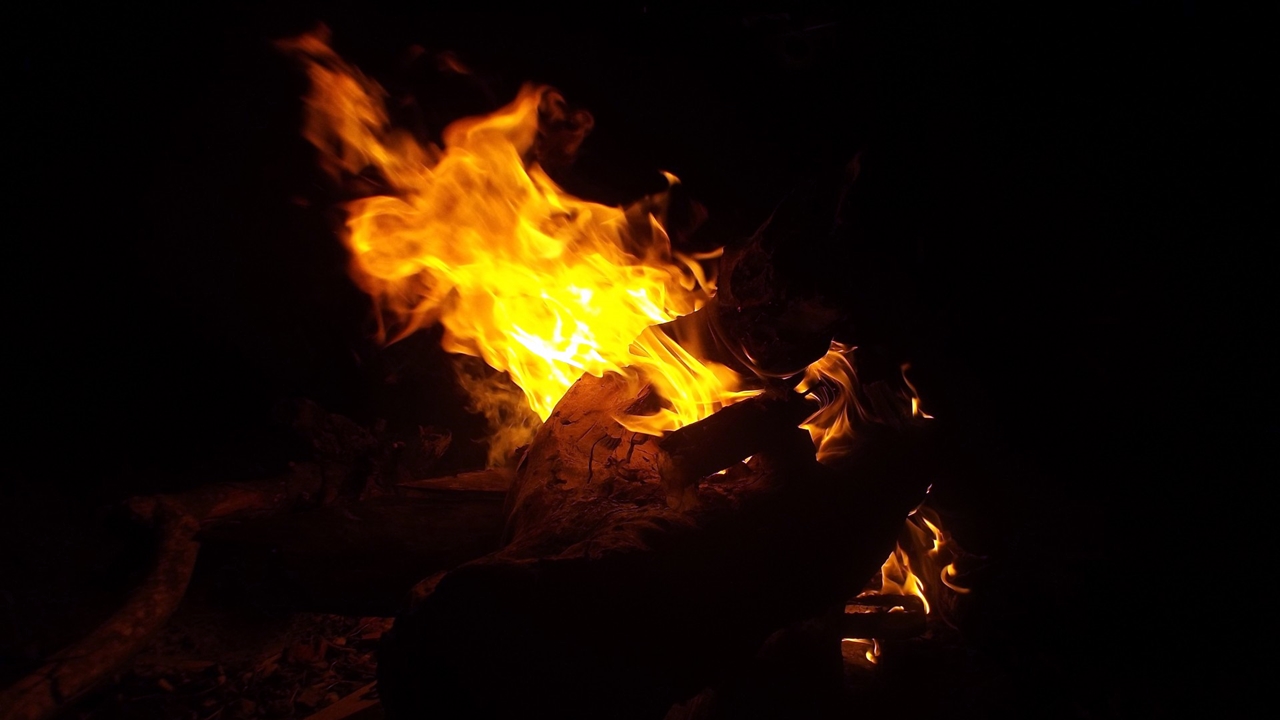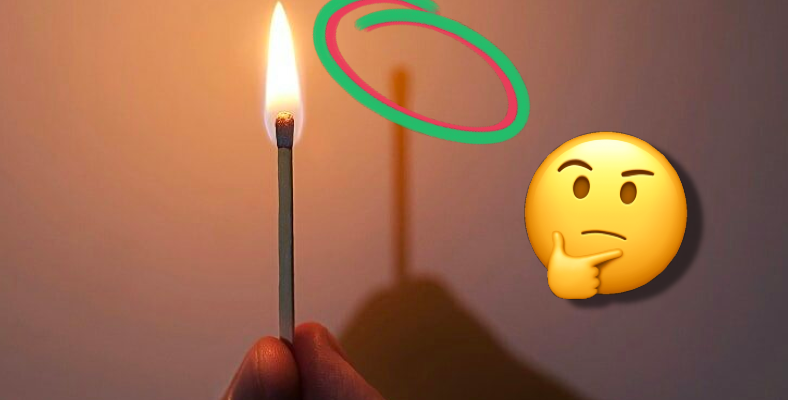When we shine light on any object in a dark environment, we are quite familiar with seeing the shadow of this object. In fact, this shadow reflected on the wall of the house helps us have fun moments by making hand movements and changing the shape of this reflection. But what about when it comes to fire?
Let’s imagine that we light a candle and move it closer to the wall. The reflection of the thin and long candle is visible on the wall, but Where is the shadow of the fire? There seems to be something odd about this.
So, what are the conditions required for an object or substance to cast a shadow? What differences does fire have at this point?
To answer this question, let’s first look at what a shadow is in the light of science.
A shadow occurs when light rays reach a surface and are blocked by an object. It is a dark area or shape. A shadow can only occur when an opaque element is placed between the light source and the object on which the shadow will be cast.
Some light sources and substances are not capable of creating shadows. These substances can, in some cases, block light rays and momentary shadows on the surface can create.
So does this mean that fire can have a shadow?
Actually, the answer is both yes and no. Fire has no shadow because light, creates shadows when it does not pass through an object. For this reason, it can be clearly seen that no shadow is formed when a strong light source passes over a bright flame.
In short, no two beams of light can interact directly. Fire is a source of light and light sources have no shadows.
On the other hand, there may be a shadow of the fire, but this is not what is thought.

Although flames cannot cast shadows on their own when any part of the reflected light beam is refracted or interrupted shadow may occur. The shadow area is often the area where the beam receives the least amount of light.
The dimer area of the beam, which receives a relatively small amount of light, takes the shape of the opaque object that deflects or restricts it. This beam of light is blocked or redirected by flames Only in this way can a shadow be formed.
It is also possible for fire flames to block or deflect light.
With the fire, a large number of various hydrocarbon compounds and fuel or oxygen molecules is revealed. When the fire starts, into the atmosphere; carbon dioxide, water vapor, soot and other pollutants are released.
Therefore, for the simple reason that the flame contains hot air, the light in the light beam It may deviate and cast its own shadow.
So how does the shadow of a blazing fire form?
Hot air and cold air surrounding the flame boundary can cause the light to bend away due to the forward pushing effect. Just like a camera lens, deviation between two different materials Breaks in interfaces takes place.
Because the flame contains hot air and some contaminants, it deflects the light within the light beam and creates its own shadow. Therefore; shadows created by blazing fire and other elements, dancing waves It looks like.
In addition, in order to see the shadow of a fire, the light beam passing through the flames must be brighter than the brightness of the fire.

If the flame or the light passing through the fire is dimmer compared to the light of the flame, the light produced by the fire fills the dim space and thus no shadow is formed.
For example, when you turn on a dim flashlight on a campfire in the dark of night, the flames do not cast a shadow. But a brighter and stronger light, It creates a distinct shadow along with the heat from the fire and smoke.
Our other content about light and shadow:
RELATED NEWS
Why is it Almost Impossible to See the Shadows of Planes and Birds in the Air?
RELATED NEWS
Both Bright and Warm: What Happens If We Turn on a Light in a Room Entirely Covered with Mirrors?
RELATED NEWS
Can we illuminate our path when we turn on the headlights of a car traveling at the speed of light?
RELATED NEWS
Is It Possible to Travel at Twice the Speed of Light and Travel to the Past?
RELATED NEWS
